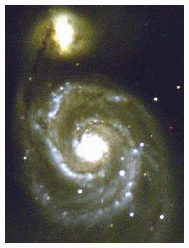![[SIP Image]](sip.gif)
|
|
About SIP Will SIP run on my machine? How to use SIP Sign up as a SIP user! FAQ Release history Known bugs/Reporting bugs
Image Databases
Imaging Processing/Analysis
Photometry
Astrometry
since October 1999 |

![[Sky Image Processor ---
a web-based astronomical image reduction and analysis system]](stitle.gif)
[To open a SIP window click on the "Start SIP" button above (once everything is done loading). Example images to load from this server are m51dss.fit, m1dss.fit, m13dss.fit, m51ccd.fit, atlas1.fit, and atlas2.fit (use lower case letters). For instance, after selecting the "File, Open Image File from the Internet..." menu item, enter "http://www.phys.vt.edu/~jhs/SIP/images/m51dss.fit" in the dialog box.]
New! SIP is now a "signed applet" for Netscape and Microsoft Internet Explorer. (For more detals see Will SIP run on my machine?)
New! Mac users may not see a button above. Button or no button, Mac users will want to download SIPapplet_sit.hqx, which will allow SIP to run on a Mac as a full-featured, signed applet. Of course, you can always test-run SIP as an unsigned applet in Microsoft Internet Explorer. (For more details see Will SIP run on my machine?)
SIP is an astronomical image processing program which runs over the Web. It was written specifically for students (SIP could stand for "Student Image Processor," or "Standard Image Processor," or even "Simple Image Processor"). While SIP is designed for use by instructors and students at any educational institution, it can certainly be used by anyone with access to the Web. The program provides simple, yet quite general tools that enable the user to carry out standard CCD image processing procedures. Complicated procedures (e.g., unsharp masking) can be accomplished in a step-by-step fashion, using the tools provided, allowing the user to learn and understand how the procedures work (no "black box" procedures). The author is John Simonetti, a faculty member of the Department of Physics at Virginia Tech.
The program is written in the Java(tm) programming language in order to make it usable over the Web. It should run on any machine with a Java 1.1 compatible web browser; for more details see Will SIP run on my machine?.
The goal of the SIP project is to provide a means for students to learn how to accomplish the three major tasks of astronomical imaging:
- image processing and analysis -- combining images, or massaging images in order to extract quality information present in those images. What is the structure of distant galaxies?
- photometry -- measuring the precise brightness of variable stars or flickering quasars, for example. Studies of variable stars yield measuring sticks for determining the size and age of the universe.
- astrometry -- measuring accurate positions of moving asteroids or comets, for example. Position measurements of asteroids yield the data necessary to determine accurate orbits --- when will we discover that a near-earth asteroid is on a collision course with Earth?
Starting SIP
Click on the "Start SIP" button near the top of this page to open a SIP window. Example images to try loading from this server and playing with are m51dss.fit, m1dss.fit, m13dss.fit, m51ccd.fit, atlas1.fit, and atlas2.fit (use lower case letters in the names as shown; image credits). For instance, after selecting the "File, Open Image File from the Internet..." menu item, enter "http://www.phys.vt.edu/~jhs/SIP/images/m51dss.fit" in the dialog box. In browsers that can run signed applets you can also load images from your own machine or any location on the web (if you explicity give the applet permission to do so). See the links at the left side of this page for other images.(For the Java-knowlegable, the SIP applet has been
signed; the digital "signature" is "Virginia Polytechnic Institute and
State University" (Virginia Tech). A signed applet cannot be tampered
with by anyone. For more information on signed objects, and digital IDs
see Netscape Object Signing: Establishing Trust for Downloaded
Software. Also, please see the disclaimer at the end of this
page.)
Why SIP?
Why use SIP as an image processor? SIP is unique in many ways. When using a browser that can run signed applets, SIP can load images not only from your machine but from anywhere on the Web. The program is loaded into your machine along with this Web page. This means you never need to worry about installing the software, or any upgrades. You always get the latest version. Once you click on the Start SIP button the program runs on your machine (not on this server), so you also get the speed advantages available to a program run off the local disk.An instructor in Astronomy can use SIP to enable students to load and analyze images from anywhere on the Web (including the instructor's own collection placed on a local Web server). The instructor can be assured that everyone gets the same program, without the students or the instructor having to load any software onto any machines. Students can do the work from any computer: in a collective lab setting, from a campus computer lab, or from home. This sort of decentralized, distance-learning usage was the main motivation for writing this program (we use it in our Introductory Astronomy course, and plan to use it in our public and school outreach programs).
Finally, what's with the name? Well, you "sip" java, don't you?
![[Virginia Tech Department of Physics]](vtlogo.gif)